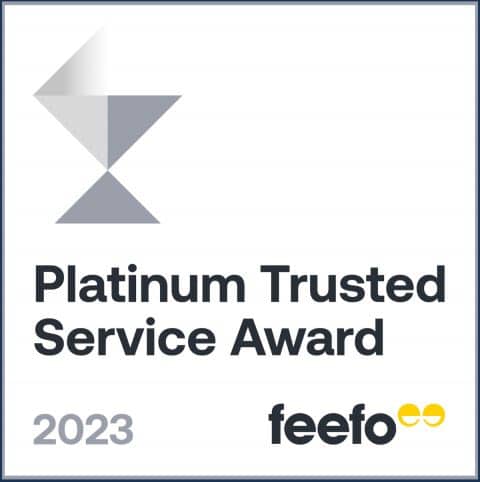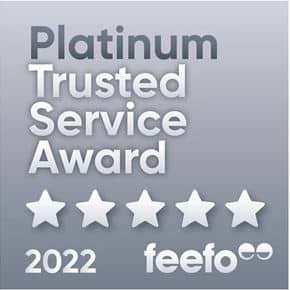Home > Business Loans > Van Leasing
Van Leasing
Author
Savvy Editorial TeamFact checked
Van leasing is one of the most versatile areas of business finance, so there’s a workable option for every enterprise out there. Whether you need to run presentable, newer vans every year and outsource fleet management or you want access to a single vehicle longer-term, there’s a finance solution to meet your needs. Before you take on any form of van lease, it’s essential to know how each one works and assess whether that suits your business requirements and targets.
Savvy helps thousands of Australian companies and sole traders save money on vehicle costs every year because of our large panel of lender partners and expert consultants. Finding van leasing that really delivers the goods means exploring as many specialist van lease products, lenders and offers as possible. We provide more vehicle choice, more options and reduce the time it takes to source cost-effective van finance. Get your application started today and drive away before you know it.
What are my van leasing options?
There are several options to choose from when taking out a van lease. These are:
Operating lease
Many Australian businesses use an operating lease to run modern, reliable vehicles for anything up to five years without the need to spend time and money on administration. Operating leases are a fully maintained finance solution and can include elements like registration and insurance, vehicle servicing, and maintenance like tyres and repairs. With an operating lease, you can claim both lease and running costs as a tax deduction when the van gets used 100% for business. If there is some personal use, you can still claim deductions on the business portion.
Finance lease
Under a finance lease arrangement, your business would essentially be granted full control over the van, meaning you'd need to sort your own rego, insurance and other running costs, enabling you to choose your preferred option and save on what you might be charged compared to if your financier automatically bundled it into your payments. This makes your repayments cheaper, but the overall process more involved.
You'd also have the option to buy your van at the end of your agreement. This comes about due to the residual payment or balloon on your lease, with which you're required to do one of the following:
- Pay the residual out of pocket and take full ownership of the van
- Sell or trade in the van, using the money obtained to pay off the residual
- Take out a new lease for the same car
Novated lease
A novated lease is one which can be taken out regardless of whether you own a business, but requires you to be employed somewhere which offers salary sacrificing. Under this arrangement, your employer takes on the leased van on your behalf, deducting the cost of the lease payments from your pre-tax salary, reducing your payable income tax in the process. This is the same as an operating lease in that it's fully maintained but doesn't have to be used for commercial purposes. This might be useful for people who need a van to help them operate their side hustle but don't have the funds to pay for a full purchase.
How does sale and leaseback work?
Sale and leaseback is a way to free up any capital your company has tied up in vans or other vehicles and even equipment. If you already own vans, you can sell them to the lender before leasing them back. Some sale and leaseback lenders offer fully maintained solutions, so you also gain from less administration and lower running costs. Terms range between 12 and 60 months.
What is a chattel mortgage?
Chattel mortgage finance is secured commercial lending, which runs for anything between one and seven years, where your van acts as collateral against your borrowing, so interest rates stay relatively low. With a lease, you get an option to buy at the term’s end, but the vehicle belongs to the lender until you pay the residual when the term ends. A chattel mortgage-financed vehicle shows on your balance sheet from the start, although the lender retains a mortgage on the van until you repay all the finance. Terms range from one to seven years, and you can refinance the residual when the time comes if that meets your needs. Another significant difference between chattel mortgage finance and leasing a van is that you’re free to tailor repayments according to your cash flow by adjusting the residual, within the lender’s guidelines.
- Claim all the GST on the purchase price when you file your next business activity statement
- All repayments are GST-exempt
- The entire residual amount is GST-exempt
- Claim the interest portion of repayments
- Claim for depreciation on the van
Why Australian business works better with Savvy
More van leasing options
More convenient process
More savings
What our customers say about their finance experience


Savvy is rated 4.9 for customer satisfaction by 76 customers.

Common van leasing questions
Costs are based on the purchase price, which is the value of the vehicle plus any upgrades you require. In the case of a novated lease, the lender will set a residual that’s due at the end of the term. That's calculated based on the value of the vehicle when the agreement ends, so your regular payments are based on the remainder, which is equivalent to the vehicle’s depreciation during the lease. The ATO sets residual amount guidelines as follows, based on the length of the finance term (correct as of August 2023):
- 12-month term: residual is 65.63% of the purchase price
- 24-month term: residual is 56.25% of the purchase price
- 36-month term: residual is 46.88% of the purchase price
- 48-month term: residual is 37.50% of the purchase price
- 60-month term: residual is 28.13% of the purchase price
The asset you intend to finance, and the age of the item will significantly influence the interest rate you’re going to pay for the duration of the agreement. Vehicles are among the cheapest assets to finance, and what’s even more advantageous is that brand-new vehicles, such as leased vans, get the lowest interest rates of all. Commercial van leasing rates are the cheapest rate on the market. Commercial rates and always cheaper than consumer rates.
Qualifying for a van lease is pretty straightforward, but you’ll need some documentation so your lender can assess your application:
- You’ll need to submit business financials for the last two years, in the form of profit & loss statements, balance sheets, and tax returns plus your driver’s licence.
- If you are a business that cannot provide these forms as they have not yet been completed for the current financial year, Savvy partners with lenders that offer low doc van finance to provide your scenario with solutions.
These days, it’s common for companies to get vehicle wraps and signwriting, and that’s a great form of advertising. Many leasing companies are okay with branding on your van, so long as it's removed before you hand the vehicle back, if that’s what you decide to do.
You can get any upgrades you require, but you need to discuss that when you’re arranging the lease and choosing a vehicle. That’s so the costs are included in your payments, so you'll be able to return the van in delivery condition (apart from normal wear and tear) if you’re on an operating lease.
Your commercial finance options
Purchasing a car or another asset for your business? Chattel mortgages function in the same way as a standard car loan but offer a range of tax benefits to save your business money in the process.
Many companies require highly valuable equipment to help them operate, but they don’t come cheap. Equipment finance can help your business manage the cost of valuable plant or machinery.
If you’re looking to purchase a truck for your business, you can access specialist financing to help you buy it the right way. Truck finance can help you buy the vehicle you need, big or small.
You can take to the skies with an aircraft lease or purchase. Select your ideal model and repayment conditions and compare offers from trusted lenders to help you find the best rate.
Whether you need a new POS system, computers for your office or an enhanced security network to be installed around the premises, you can find the solutions you’re looking for with technology financing.
Farmers and those in the agriculture need a range of specialised vehicles and equipment to operate. Seeking out agriculture finance could be the solution you need to make the purchase happen.
You may not want to commit to the purchase of your vehicle or equipment just yet. Operating leases come with a variety of key benefits, such as having on-road costs built into your tax-deductible payments.

